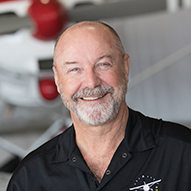
Flight training can be challenging even under the best of circumstances. In time of war, things can get even tougher, however. In the 1940s when the flight training cadets who came to be known as the Tuskegee Airmen were training, they faced conditions and circumstances that were far less than ideal. Yet they succeeded beyond the expectations of almost everyone. Everyone but themselves, that is. How that outcome came about is worth considering for anyone who wants to fly—or to be a success at almost anything in life.
There is at least a hint of a parallel between their experience and today’s civilian flight student. Motivation and persistence are factors that may very well decide the outcome of our training. In general it is both fair and accurate to say that a casual attitude to study sessions and a scattershot approach to booking flights just isn’t going to produce the kind of results you’re hoping for.
The Tuskegee cadets were well versed in the importance of motivation and persistence before they ever stepped into a cockpit. Recently immortalized through the George Lucas film Red Tails, the men who went on to fly and fight in the skies over Europe deserve considerable respect. Yet, as inspirational as their collective story is, individually they are often even more impressive than their reputation as a group suggests.
“The movie focuses on the 355 who went overseas,” Leo Gray says, reminiscing about his experiences as a fighter pilot in WWII. It was those 355 who were deployed into action and fought in the war. They are the few who made up the Red Tails. As a young man in his 20s, Gray was one of them. But that’s not the whole story. “Nine-hundred thirty-two completed the advanced pilot training program,” Gray explains. “About 16,000 people are considered documented, original Tuskegee Airmen. That includes anyone who was assigned to any base to which pilots who graduated from Tuskegee were assigned between 1941 and 1949.”
By 1949 the military had begun to integrate, which turned the experiment begun at Alabama's Tuskegee Institute into a matter of course in the armed forces. Men were given the opportunity to prove themselves based on ability, without the barriers that had limited previous generations because of the color of their skin.
Gray grew up in Massachusetts, not far from Daniel Keel. They both were members of the same Boy Scout troop. Both went to Tuskegee. Gray wound up in the pilot’s seat of a P-51C and flew 15 combat missions over Europe, while Keel was assigned to a B-25 unit that was still stateside when the war ended. “Six members of our Boy Scout troop ended up at Tuskegee,” says Gray.
Clearly, their circle of friends was doing something right.
“Education is the key,” says Keel. That perspective is shared by many, if not all of the Tuskegee graduates. They share a powerful conviction that it was their ability to learn that allowed them to excel. Keel qualified as a navigator, a bombardier, and a multiengine pilot.
 Fellow Tuskegee alum George Hardy says, “They all valued education. They studied and were able to take the exams. They could read the manuals sufficiently to understand them and assimilate the information that was in them.”
Fellow Tuskegee alum George Hardy says, “They all valued education. They studied and were able to take the exams. They could read the manuals sufficiently to understand them and assimilate the information that was in them.”
Hardy took the test to enter flight training when he was only 17 years old. He passed and was sworn in as a private in the Army Reserve. “They sent me home and said I’d hear from them after I turned 18.” He did, too. Hardy had a birthday in June and reported for active duty in July. “I graduated as a second lieutenant and a pilot in September 1944.” Within months he was in Europe flying a P-51D as a member of the 99th Fighter Squadron, part of the 332nd Fighter Group. Still in his teens, Hardy flew 21 combat missions before the war ended.
Hardy has one point of playful contention with the Hollywood version of his personal history. “The airplane that crashed in the end—A33,” he says, smiling. “Most of my missions were flown in A33, and at the end of the war it was still in good shape.”
Hardy made the military his career. In addition to performing duties as a pilot, he also commanded a maintenance squadron. He flew P-51s in WWII, B-29s in Korea, and AC-119s in Vietnam. By the time he retired, he had flown 136 combat missions on two continents over the course of four decades. He retired from the military in 1971 as a lieutenant colonel.
Keel says, “The Tuskegee Airmen proved to the world that if the Negro was given the opportunity, with a good education, hard work, and a little luck, he could do the job as well as anyone else.”
Gray agrees. “In 1949 they had the first Top Gun competition,” he says. The event took place in Las Vegas at what is now Nellis Air Force Base. “Lo and behold if that doggone team from the 332nd Fighter Group at Lockbourne [now known as Rickenbacker Air National Guard Base] didn’t go out there and win first place.”
The Tuskegee Airmen were motivated, persistent, and proved in the end to be not just capable, but exceptional. That is a legacy to which any one of us, in any time period or profession, could aspire with pride. In that sense, at least, true success is universal given a sincere application of motivation and persistence, coupled with an “I can do it” attitude.



